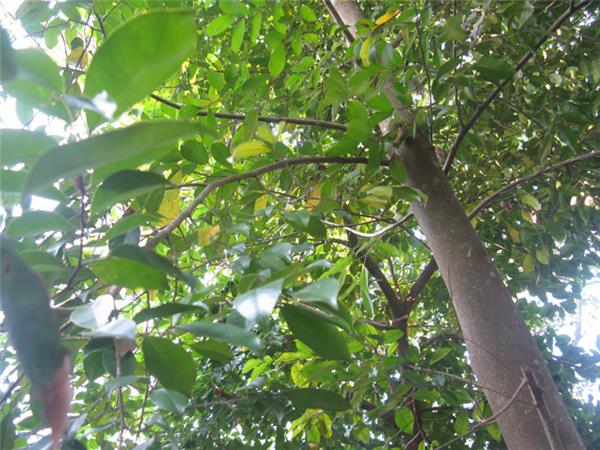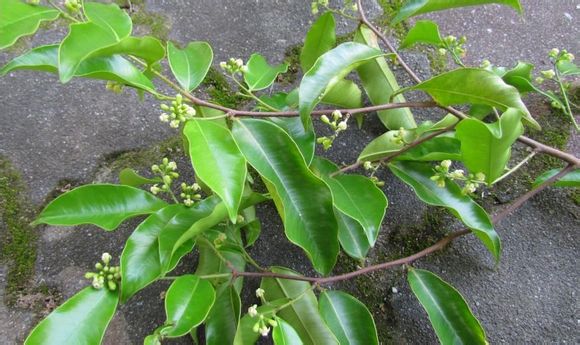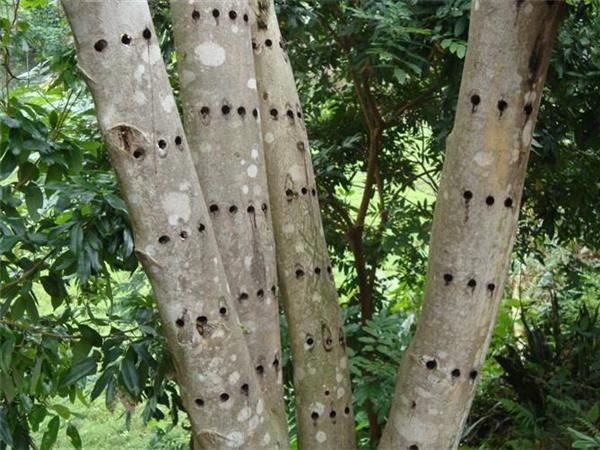Planting and pest control of Aristolochia mandshurica
Aristolochia mandshurica is a kind of tree species with both ornamental value and economic value. it can not only be used for greening the city and landscaping, but also its trunk can be used for wood material selection, so it has more objective breeding value.

Matters needing attention in the planting of Artemisia mandshurica
Soil: it can grow in acidic sandy loam, yellow loam and red loam. In the wild state, the barren clay grows slowly and grows poorly, but the wood is sturdy, rich in flavor, rich in oil and oil, and easy to form fragrance and good quality than the environment with good water and fertilizer conditions, while under the condition of deep and fertile soil, the wood and skin tissue is loose, the secretion of resin is less, the fragrance is very little, and the quality is poor.
Planting: when the temperature rises in the spring lunar calendar from February to March, when the spring shoot begins or has not yet sprouted, it is easy to survive after planting in overcast and rainy days. The seedlings with culture cup can be transplanted all the year round. When planting seedlings, the seedlings should be straight, the roots should be stretched, the soil should be covered layer by layer, compacted, and fixed root water should be poured, and the survival rate can reach more than 95%.
Moisture: like wetting, drought-resistant, require annual rainfall 1500~2000mm, seeds germinate quickly, unearthed seedlings are not resistant to drought, water should be drenched once in the morning and evening after transplanting seedlings to keep the soil moist. At the initial stage of planting, water should be drenched in time according to the weather.

Fertilization: if the growth is not particularly poor, the growth is particularly slow, Chen Xiang generally does not need special fertilization. The use of weeds buried in the soil can effectively increase the organic matter for the growth of trees. If it is found that there is indeed a problem with growth, it can be appropriate to apply human and animal feces and urine before spring shoots germinate in February-March to promote shoot sprouting, germination and accelerate growth. In principle, planting incense with its natural growth will make the incense purer and easier to bear incense.
Air temperature: like high temperature environment, the annual average temperature is more than 20 ℃, the highest temperature is more than 37 ℃, the minimum temperature is 3 ℃, and the short low temperature frost in winter can also adapt.
Light: the seedlings are shade-tolerant and not resistant to exposure, but the shade should not be too large. 40% to 50% is suitable. Adults like light, light can ensure normal flowering and fruiting, full and strong seeds, and promote the formation of high-quality incense.
Pruning: the incense tree is a tree species with the trunk to bear incense, so to promote the growth of the trunk, conducive to fragrance, it must be pruned at the right time. Cut off the lower branches, disease and insect branches, and overdense branches step by step.

Prevention and control of common diseases and insect pests of Chenxiang wood
1. Seedling Fusarium wilt: seedling Fusarium wilt occurs in the seedling bed and causes the seedlings to wilt and die. Old nursery bed, poor drainage, dense planting and easy to develop. Disinfect the seedling bed before planting, reasonably close planting; pull out the diseased plants in time at the initial stage of the disease and use 70% dimethazone 1000-1500 times and 50% carbendazim 800 times to drench the soil 2 times 3 times, each time with an interval of 7-10 days.
2. Anthrax: anthrax harms the leaves, which are brown dots at first, then expand into round, oval or irregular spots, and some of the disease spots are wheel-shaped, and the leaves fall off when they are severely punished. When the rain is wet and the dew is heavy, it is beneficial to the occurrence of diseases. At the initial stage of the disease, 80% anthrax 600-700 times or 75% chlorothalonil 400-600 times were sprayed 2-3 times, each time at intervals of 7-10 days.
3. Leaf curlers: leaf rollers do harm between summer and autumn every year. The larvae spin silk to roll up the leaves and hide to eat the mesophyll inside, resulting in the weakening of photosynthesis and affecting the normal growth. If you find the rolled leaves, cut them off in time and bury them deeply to reduce insect pests. This insect is the main pest of Aristolochia mandshurica, which eats up the leaves when it is serious. It can be sprayed with 25% chlordimeform 500 times diluted before the insect pest rolled leaves, or 1000 times of dichlorvos EC, once every 5-7 days for 2-3 times.

The planting management of incense wood is relatively simple, and what we need to pay attention to is only some daily maintenance projects, and there are no places that require high-tech content, so if there are friends who want to plant some trees in the courtyard, incense wood would be a good choice.
- Prev

Red Beauty Winter Red Begonia that won't fall even in Winter
Red Beauty Winter Red Begonia that won't fall even in Winter
- Next

What are the planting management and maintenance measures of Pinus tabulaeformis seedlings
What are the planting management and maintenance measures of Pinus tabulaeformis seedlings
Related
- Wuhan Hospital Iron Tree Blooming Result Was Instantly Frightened by the Gardener Master
- Which variety of camellia is the most fragrant and best? Which one do you like best?
- What is the small blue coat, the breeding methods and matters needing attention of the succulent plant
- Dormancy time and maintenance management of succulent plants during dormancy
- Minas succulent how to raise, Minas succulent plant pictures
- What are the varieties of winter succulent plants
- How to raise succulent plants in twelve rolls? let's take a look at some experience of breeding twelve rolls.
- Attention should be paid to water control for succulent plants during dormant period (winter and summer)
- Watering experience of twelve rolls of succulent plants
- Techniques for fertilizing succulent plants. An article will let you know how to fertilize succulent plants.

